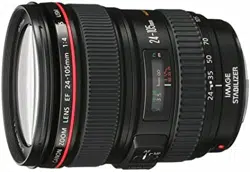Loading ...
Loading ...
Loading ...

EF 14mm f/2.8L II USM
20 sec @ f/4.0, ISO 12800
© David Noton. Canon Explorer
EF 14mm f/2.8L II USM
EF 24mm f/1.4L II USM
EF 28mm f/2.8 IS USM
EF 20mm f/2.8 USM
I
t might seem strange to go for a lens that provides
only one angle of view. After all, zooms offer the
convenience of having a range of focal lengths
in just one lens. But fixed focal length lenses –
those that don’t zoom – have advantages of their
own. They deliver superb image quality and many
professionals use them for this reason alone. There
is also a creative advantage that comes from only
having one focal length. Zooms can make you lazy,
whereas a fixed focal length forces you to move to
find the right composition.
Fixed focal length lenses often feature very wide
maximum apertures, which makes them a great
choice when you want to shoot in low-light
conditions. Or when shallow depth of field is
needed for creative effects.
Landscape photographers using an EOS camera
should look to the wide-angle prime lenses in the
EF range. The EF 14mm f/2.8L II USM and EF 20mm
f/2.8 USM lenses offer ultra-wide angles of view and
extended depth of field, so you can make the most
of foreground detail. The EF 24mm f/2.8 IS USM and
EF 28mm f/2.8 IS USM are more conventional wide-
angles that cover focal lengths loved by landscape
photographers, thanks to their broad coverage and
dramatic perspective. Lenses like the EF 24mm f/1.4L
II USM are popular with documentary photographers,
who often shoot in unpredictable lighting conditions.
Prime lenses offer fantastic sharpness, even at the
edges of the frame, meaning you’ll be able to capture
a huge level of detail from a landscape scene. Their
compact design makes them highly portable, so you
can take plenty of different focal lengths with you
wherever you go.
PRIME
LENSES
Places
33
Loading ...
Loading ...
Loading ...
